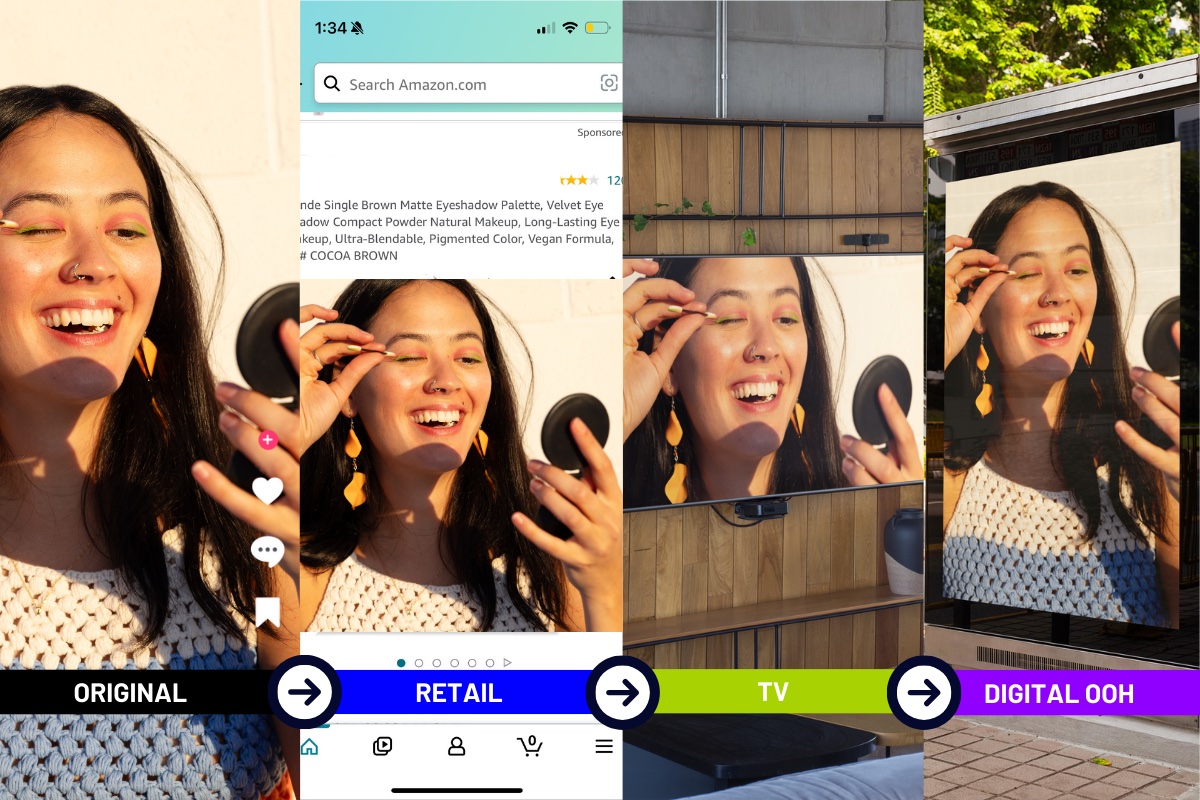New research from Linqia connects influencer marketing campaigns to MMM and MTA results.
Influencer marketing creates content at the speed of culture. Its power lies in its ability to speak to consumers directly across the funnel. As a result, influencer budgets and campaign parameters are expanding dramatically.
In 2024, the global influencer marketing industry is expected to reach $24 billion in ad spend, up from just $1.7 billion in 2016. Creator content is now bursting through the walls of social media, landing everywhere, from online video and connected TV to digital out-of-home and e-commerce product detail pages.
“For many years, the concept of authentic raw style was a very social-media-based construct, but not anymore—people want that style everywhere,” said Keith Bendes, VP of marketing and strategy at influencer marketing agency Linqia. “A brand that does something viral and trendy is valuable, but the focus should always be on how to make sure influencer marketing becomes the most valuable investment channel for the company.”
Connecting influencer marketing to MMM and MTA results
According to Linqia’s 2023 State of Influencer Marketing Report, 60% of enterprise marketers say their top challenge is determining influencer campaigns’ ROI. Bendes said he was surprised by this, indicating that it is now possible for every aspect of the influencer marketing funnel to be measured, all the way down to ROI.
Some marketers have faced trouble because influencer marketing has historically been measured by what industry insiders call “vanity metrics,” which only tell a piece of the story. Marketers have thus struggled to demonstrate true return on investment to their senior leaders.
But Linqia is working with many of its clients to connect influencer performance not just to brand health and social engagement metrics but all the way through to mixed media modeling (MMM) with providers like Nielsen, Neustar, and Ipsos, as well as true lower-funnel multitouch attribution (MTA) results. This provides a deeper understanding of how influencer marketing performs against all other marketing channels.
“Influencer is no longer a test-and-learn tactic,” said Nader Alizadeh, Linqia’s co-founder and CEO. “Brands are spending well into the millions on the channel; that means they need to be held to the same standards as other marketing investments, inclusive of being able to measure all parts of the funnel from awareness to consideration to purchase.”
Most recently, Linqia announced an analytics upgrade to its Resonate platform, with expanded real-time data availability, a new UI to find the metrics that matter most, and the ability for brands to report on their own custom metrics. The company has prioritized enabling customized measurement, including the integration of MMM and MTA results, based on its partner’s existing measurement framework.
Reaching new audiences and channels
One major benefit of influencer marketing partnerships is that content produced by creators resonates with consumers significantly more than traditional brand advertising. A recent study from Matter Communications showed that 81% of consumers claim that social media posts from influencers, friends, or family members drove interest in an item or service within the past year.
“Influencer marketing has proliferated not only because it provides entertainment value but because it creates an emotional connection with consumers,” said Daniel Schotland, Linqia’s Chief Operating Officer. “Creator content can perform three to five times better than branded assets when applied to other advertising channels such as display, OLV, CTV, DOOH, and even linear TV.”
Thus, brands have begun adapting creator content for the entire marketing mix, adjusted to each channel and platform’s specs, size aspects, ratios, and resolutions.
To facilitate distribution, Linqia has launched a collaboration with ad-serving and personalization platform Clinch to create, scale, and optimize creator content across media channels. Creator content can be translated via templates to essentially any format.
“A single asset can be turned into 50 with the right branding, coloring, and product for a specific market while targeting consumers on a granular level,” said Schotland.
Bringing data and automation into influencer discovery and briefing
Second to measurement in challenges for influencer marketers is finding the right influencer partners. What was once a highly manual and subjective task is increasingly becoming an automated and data-driven process.
Finding ideal influencers is more than selecting someone with the right follower numbers in the right demographic. According to Bendes, Linqia’s technology platform, which is powered by machine learning and artificial intelligence, funnels through 10.5 billion data points to take into consideration a brand’s performance objectives, the types of creator personas they’re looking for, what audience they’d like to reach and the content they’re looking to create. The platform then helps find creators who will give the campaign the best chance at success based on all those attributes and modeling based on predicted performance.
Linqia can also apply this information to drive the briefing process so that the company’s partners can understand what narratives perform well for the brand, category, and content topic. The platform not only helps find the right influencers and facilitates end-to-end campaign execution, but it also enables brands to manage their creators with scoring based on factors like return on ad spend, creator engagement/ease of partnership, and paid media performance.
The rise of creator media, involving paid media ads that leverage the creator’s content, has also led to new expectations around how influencer marketing makes a brand’s broader media investment more effective and efficient. Brands spend many times their influencer marketing investment on broader media, so how the former impacts the latter is an important part of the value equation.
Linqia has built a media testing and optimization process focused on creator media. How the original content is optimized for broader audiences, bought using influencer audience data, and tested against different message structures is delivering significant value to brands, Alizadeh said.
“The influencer space is chaotic,” he added. “You have to balance between having a strong creative services arm and the ability to leverage technology. Effectively executing influencer campaigns requires ownership of both the art and the science.”
